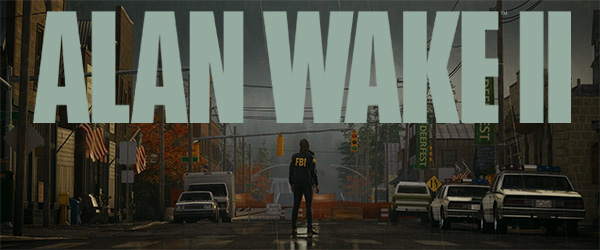
I'll give Remedy this bit of credit: in a world overrun with soul-less, design-by-committee, live-services and vehicles for micro-transaction economies, Alan Wake 2 is a game that actually has a strong creative vision and personality. It follows in the footsteps of Hideo Kojima and Death Stranding by being completely confident in itself and being un-abashedly weird. And just like with Death Stranding, that means that sometimes Alan Wake 2 is genius; other times it's confoundingly stupid and hackneyed!
It's hard even to classify Alan Wake 2 into a single genre. That goes for both narrative genre and also ludic genre. In both cases, it's kind of all over the place. At the most reductionist level, it follows the basic formula of a modern horror game: exploring creepy environments to find keys for doors, fighting monsters as an over-the-shoulder 3rd-person shooter, solving puzzles, and managing a limited inventory. So it's a "horror game", right? In fact, sometimes, it's seriously scary and disturbing. But other times, I'm questioning its "horror" status while I'm laughing out loud to a deliberate joke, or bored out of my mind because nothing scary or particularly exciting has happened in hours. Yet other times still, it's farcically campy or schlocky, and un-intentionally laughable. It's story is ridiculously out there in its concepts and execution, but somehow every beat of the plot is set up and signposted as clearly and obviously as the neon signs that point the player to the next objective in the Dark Place.
Plot twists are signposted more clearly and obviously than the neon signs that often guide the player through levels.
It's also frequently up its own ass. It is, after all, a fictional story about the power of fiction to alter reality (and our perception of reality). It even features the lead designer as a self-insert character within the story. Though surprisingly, he made himself a secondary character instead of one of the 2 playable protagonists. So it's not really about him, but he still found a way to make the entire plot revolve around that secondary character.
In the mind's eye
I feel that Alan Wake 2 is consistently at its best when its sitting firmly in its horror-mystery mode. As such, the opening couple hours of the game really pulled me in and hooked me. The game's main quest and side content are split up into various "cases" for the FBI agent protagonists to solve. There's a mechanic in which the player can retreat into Agent Saga Anderson's "Mind Space", which is an imaginary office room in which she sorts through all the clues she's gathered and strings them together on an imaginary wall in order to fit the puzzle pieces of the mystery together. Each time the player discovers a critical piece of information in the game world, it will show up in the Mind Space's filing cabinet as a new file in a case folder. Putting the clues together in the right way will unlock new lines of inquiry, and can even reveal the next objective.
Agent Anderson can review the known evidence in her imaginary Mind Space office.
Apparently, the actual game doesn't even pause, and continues to play in the background while the player is in the Mind Space. Even though the Mind Space is a full-screen environment, the character can still be attacked by enemies in the "real world". At first, I thought this would be obnoxious, but after the first time I was attacked while trying to re-arrange items on the case board in the Mind Space, I learned my lesson. After that, I actually came to realize that that needing to find a safe, peaceful space in order to let the character think about clues they've discovered (and how to proceed), really helps to emphasize the danger and stakes of the situation.
Arranging the clues in the Mind Space is not very difficult or complicated. It's not like having to solve a person's fate in Return of the Obra Dinn, or anything like that. Most of the time, the process is just going through the motions. Even when there are multiple options for where a piece of evidence can go, the solution can be easily brute-forced without the player having to know anything about what's going on.
The Case Board is an immersive quest log and objective tracker.
Even so, the Mind Space is a creative idea for presenting objectives, quest logs, story summaries, and characterization. The Mind Space at least tries to force the player to have to engage with the events of the story in a meaningful and immersive way. The player has to at least pretend to know how the various events of the story, the characters, and the McGuffins you find all fit together in the broader story in order to progress the main story or side quests.
And in fact, the entire game is about the interplay between the audience and the fiction. For most of the story, it's about the ability of fiction to re-shape people's perception of reality, but as the game goes on, it becomes more and more about the audience's ability to shape or re-shape the actual fiction. It emphasizes that any creative work is made up of both the voices of its creator(s) and also the interpretation and reception of the audience. This has always been true, with all forms of fiction and story-telling, but it's even more true with video games.
[More]
70bf8397-0bac-4efb-82b9-fb0c24ee8da7|1|5.0
Tags:Alan Wake, Alan Wake 2, Remedy, PS5, horror, fiction, shooter, mystery, investigation, light, dark, shadow, flashlight, forest, paranormal, music, cult, Federal Bureau of Investigation, Federal Bureau of Control
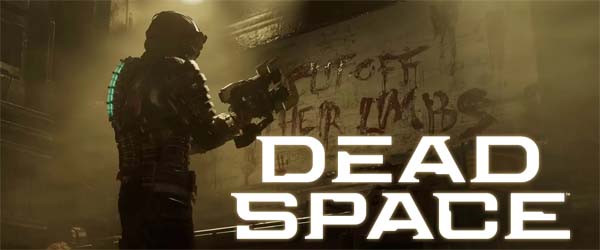
I'm gonna be perfectly honest with you right up front: I'm coming into this review with a negative bias. This is a remake that does not need to exist. Dead Space is only 10 years old, is an HD game that still looks fine. It is designed around gameplay conventions that are still standard practice today, and so the original still holds up well, outside of some mildly-dated presentation. I get the desire to remake or re-imagine older games that actually are dated, like Resident Evil 2 or Final Fantasy VII, which were both completely redesigned with modern gameplay conventions and (in especially in the case of Final Fantasy VII) bold new creative and narrative decisions. I would also understand the desire to go back and take another stab at more recent games which are really good, but which may have been virtually unplayable due to technical problems. Fallout: New Vegas comes to mind.
But this recent fad of rote remasts or remakes of PS3-era games that were already highly-polished and still modern-feeling (and thus hold up well today) just feels like lazy, cynical cash-grabs to me. Games like Dead Space, The Last of Us, and Mass Effect just feel like completely unnecessary remakes -- especially if they're going to be direct recreations of the original with little-to-no creative liberty. Heck, even the Demon's Souls remake feels unnecessary. I would much rather than Sony and FromSoft just release a digital version of the PS3 game on the PS4 and PS5 storefronts and keep the servers going. Maybe even patch the PS3 game with some of the ease-of-use features that were added for the PS5 remake. I'm still on the fence about Silent Hill 2 and Resident Evil 4, since those remakes might take enough creative liberty to justify their existence (assuming they don't shit the bed in doing so). As such, I did not buy this remake of Dead Space retail. I bought a used, second-hand copy in order to save a few bucks and to not give money to EA (and so as not to seem to give implicit support for this trend of unnecessary remakes).
Coming off of Callisto Protocol, Dead Space feels like a masterpiece.
All that being said, having just recently come off of playing through The Callisto Protocol, the difference is night-and-day. This Dead Space remake is, by far, the much better game. It's a good remake of a good game, and it's a good survival horror game in its own right.
Mostly how I remember it
Dead Space is a pretty straight-forward, by-the-numbers recreation of the original game, with only a few creative liberties taken. It's still a 3rd person shooter built around the challenge of shooting off the limbs of zombies and monsters instead of aiming for the center of mass or going for head shots. The story, mission structure, map, and many set pieces will all be completely recognizable to anyone who played the original game, even though some things here and there might be a little different.
As such, pretty much any review of the original Dead Space still holds mostly true here. All the things that I liked about the original game are still present. Unfortunately, I never reviewed the first Dead Space on this blog, so I can't just link you to that. I'll have to just summarize my feelings here.
Isaac is fully voiced and has more agency compared to the original.
The enemies are threatening, and the combat is challenging. The non-traditional weapons, combined with kinesis and stasis and creative enemy design, provide a lot of variety and strategy in combat that goes far beyond just "shoot bad guy in the head". The setting and lighting really help to sell the sci-fi horror aesthetic. The in-universe, diegetic, holographic interface holds up well and never pulls the player out of the immersive environment. The Ishimura itself still feels like a believable, functional place. The story is derivative, cliché, and cringe-worthy in some parts, but I do like the religious undertones and parody of Scientology. [More]
fd3c4399-577e-4a0d-b05d-256753797daf|1|5.0
Tags:Dead Space, Electronic Arts, Motive, Visceral, remake, horror, survival horror, science fiction, shooter, zombie, necromorph, dismemberment, religion, Scientology, Unitology
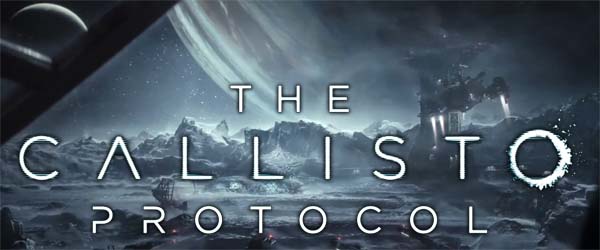
I saw a lot of social media posts in the days after Callisto Protocol's release complaining about the game being awful. Some said it was buggy and riddled with performance issues. Others said it was just a bad game, and would be bad even if it were stable.
I didn't experience a lot of the technical issues (on PS5) that others were reporting. But I also didn't start playing till later that weekend, so had the benefit of the day-1 patch. Maybe that fixed a lot of the technical complaints? Yeah, there were still some lingering technical issues, but they were mostly nagging problems that I could look past.
So I went through most of the first half of the game thinking "This ain't so bad." It wasn't very good either. But it seemed like it was being unfairly maligned. It's Dead Space, but just ... not good.
Callisto Protocol is borderline plagiarism of Dead Space, but not a very good copy.
But as I got into the middle of the game's campaign, my opinion began to change. The issues and frustrations mounted until they boiled over in the game's first boss fight (which doesn't happen until more than halfway through the campaign). Callisto Protocol is just not very well designed or though-out. It suffers at fundamental levels of gameplay design.
Space Zombie Punchout
Callisto Protocol's problems start with the awful melee and dodge system -- which is kind of the whole gimmick of the game. Instead of pressing a button to trigger a dodge, the character automatically dodges left or right if the player is pressing the left analog stick left or right (respectively when the enemy makes an attack. The character will also block if the player is pressing backwards when the enemy attacks.
It's a system that feels more like Mike Tyson's Punchout than any action shooter I've ever played. But where Punchout is a boxing game that features a stationary opponent ducking left or right to dodge the punches of a single opponent lined up directly in front of you, Callisto Protocol is ... not that. The character in Callisto Protocol is ambulatory, and attempting to navigate an environment while also fighting multiple enemies at both melee and at range.
I could not get the hang of which direction I should be dodging -- except against bosses.
I found it very difficult to get the hang of the melee combat -- at least outside of boss fights. Strangely, the boss fights seemed to have the most clearly telegraphed attacks and reliable dodging. Outside of boss fights, however, enemies are frequently zombie-like monsters that rush at the player and shamble around, making it difficult to read their movements. As such, I never know which direction to dodge. And even when I do seem to correctly dodge, I sometimes take damage anyway, which leads to the next big problem. Pretty much every time I had to engage in melee combat, I would die and have to retry.
[More]
7280ae0d-0d27-4b73-bd65-d0a7184a805a|2|3.0
Tags:The Callisto Protocol, Striking Distance Studios, Krafton, quicktime event, melee, dodge, science fiction, horror, shooter, zombie, arcade, Dead Space
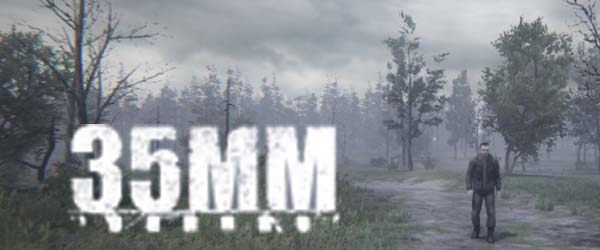
December, January, and February is usually a time when I try to make a dent in my ever-growing Steam backlog. I buy lots of games on Steam sales, and then end up not playing most of them. So when I do go into the backlog, I always try to emphasize some of the shorter, indie games in the hopes that I can power through several before the big spring game releases start rolling in. This time around, I loaded up an independent Russian game from developer Sergey Noskov, which was very well-reviewed back when I bought it in 2016. Apparently, it's going to be released on PS4 soon, so this review is sort of topical. It hasn't really held up as well as I hoped it would in the almost-5 years since its release.
Ironically, this game is set during a fictional ebola pandemic that has turned Russia into a post-apocalyptic wasteland, and I'm playing it during the ongoing COVID-19 pandemic. The game was released back in 2016, long before COVID.
35mm is a hard game to classify. It's not quite a shooter. Not quite a survival game. Not quite a horror game. And not quite a walking simulator. It straddles the line between all of these sub-genres, shifting from one to the other at the drop of a hat, but without ever feeling jarring about it. There's even a few little mini-games thrown in for good measure. As such, there's plenty of variety that helps prevent this game from ever feeling stale. Regardless of whichever genre 35mm is currently residing in, its slow pace, subdued, aesthetic design, and melancholy tone remains consistent. It is this pacing and tone that defines the game much more than any one genre.
35mm straddles the line between walking sim, shooter, survival game, and horror.
We play as a mysterious protagonist travelling across a post-apocalyptic Russia, presumably to get home to see his family. He is accompanied by a travelling companion for most of the game. The history of these characters and the relationship between them are never clearly defined, which feels like its setting up for some kind of narrative twist right from the start. Nevertheless, the companion character acts as a sort of guide through the first half of the game, telling the player where to go and what to do. Unfortunately, since these characters are never very well-developed, any potential tragedy or impact of the final twist (regardless of which ending is achieved) is severely neutered.
What's the deal with the camera?
Even though I can't quite put my finger on what genre to classify 35mm, one thing that I can definitely say is that it is not a game about photography. Given that the game is named for the type of film in a camera, and the camera is featured in the game's title screen and promotional material, I would think that the camera would feature heavily in the game. But this is not the case. The camera is never necessary. It isn't used to progress the plot. It isn't used to solve puzzles. There isn't even a recap of the photos I took at the end of the game. Photographs become a major part of the game's finale, but they aren't the pictures that I took during the course of the actual game.
The camera is not utilized, despite inspiring the title of the game and being featured on the title screen.
So I'm really puzzled as to why the game is named "35mm". It kind of set my expectations a little bit higher than they probably should be. I thought I was going to get something a little bit more artsy and creative. But instead, what I got is a pretty straightforward, linear game.
[More]
95ddc9a1-45e7-4fd5-a3a0-bc100b5752d8|0|.0
Tags:35mm, Sergey Noskov, Steam, PC, indie gaming, Russia, pandemic, ebola, post-apocalypse, camera, walking simulator, shooter, survival, horror
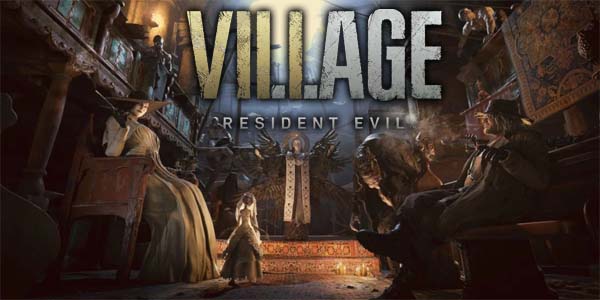
Village seems to be positioning itself as a sort of "greatest hits" of earlier Resident Evil games. I'm not sure it all comes together as well as Capcom must have hoped it would. Resident Evil VII Biohazard did an excellent job of modernizing the design philosophies of the original Resident Evil game. Map design, inventory and resource constraints, and the "fight or flight" nature of enemy encounters all perfectly re-captured the feel of the original PS1 classics, without all of the clunkiness.
Village maintains the exploratory map design of the original Resident Evil and of Resident Evil VII, but it also tries to port concepts and aesthetics from the Resident Evil 2 remake and from Resident Evil 4. The RE2 stuff fits well enough, but the RE4 influences just don't feel compatible with classic design philosophy.
The setting instantly reminded me of Resident Evil 4.
Clash of philosophies
Right off the bat, the general aesthetic screams "Resident Evil 4". The game begins in a small, rustic, eastern European village at the foot of a gothic castle. Just like in RE4, you're quickly ambushed by the monstrous villagers and have to desperately fight your way out. Resident Evil 4 replaced the traditional zombies of the series with semi-aware "ganados"; Village similarly breaks away from the traditional zombies, but this time, the monsters are werewolves.
Not long into the game, you'll start smashing crates to reveal hidden loot, and pixel-hunting along the walls and ceilings for obnoxious sparkling gems to shoot down and collect. Also just like in Resident Evil 4, you'll routinely get rewards of items and money from defeated enemies. That money and loot is used to buy items or upgrade your equipment at a shop, just like in Resident Evil 4. This is where the game started to break down for me.
Loot, ammo, and cash can be recovered from smashed crates or defeated enemies.
Giving the player rewards of in-game cash for defeating foes (and for wasting bullets to shoot glowing gems off of walls) completely changes the motivations of the player in how we deal with enemies. I'm no longer carefully considering whether to try to sneak past an enemy or run away, nor am I ever firing off a single round at an enemy's knee to stun or cripple it so I can get away without consuming more resources, the way I might in REmake2. Since every defeated foe returns some of the resources that I invest into killing it, there is no "fight or flight"; only "fight". The enemies stop being threatening or frightening, especially on the standard difficulty setting, in which ammunition is readily available and the monsters patiently await their turns to charge and attack.
Even inventory management is mostly thoughtless. The more linear, more action-oriented, and less puzzle-oriented design of the game means that key items and treasures are not put in your limited inventory, and there isn't even a storage box to keep excess weapons or supplies. Only weapons, ammo, and healing items go into your briefcase. Everything else has unlimited storage. Even crafting components have separate, unlimited storage (the only exception being the animals meats needed for the Duke to cook meals -- more on this later). [More]
b05b0e00-39c0-4ac3-9d47-9089537c0f54|1|5.0
Tags:Resident Evil, Resident Evil VIII Village, Capcom, horror, survival horror, action, shooter, Resident Evil 4, gothic horror, vampire, werewolf, Ethan Winters, Lady Dimitrescu, castle
|

| 12 | | | | | | | 60 | | 11 | | | | | | | 55 | | 10 | | | | | | | 50 | | 09 | | | | | | | 45 | | 08 | | | | | | | 40 | | 07 | | | | | | | 35 | | 06 | | | | | | | 30 | | 05 | | | | | | | 25 | | 04 | | | | | | | 20 | | 03 | | | | | | | 15 | | 02 | | | | | | | 10 | | 01 | | | | | | | 05 |
|